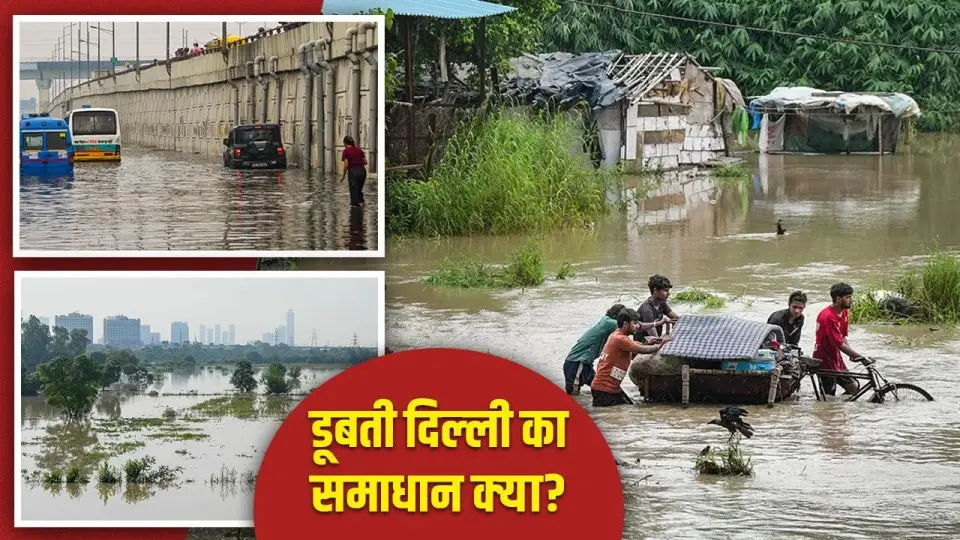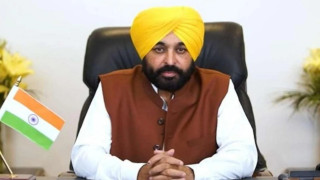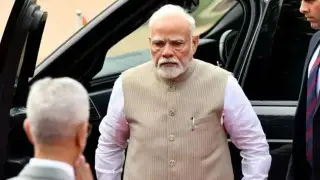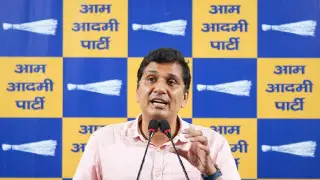
New master plan, internet survey and technology… if these 7 things are done then Delhi will never drown
National News: This sight of water-filled on roads in Delhi is not just a picture but a bitter truth that tells the pathetic condition of Delhi, the capital of India, which is moving towards the third economy. The situation has become such that there is water everywhere, from flyovers to inside the houses. This picture may seem scary to you but Delhiites see and face this problem every year. Now the question arises that what is it in Delhi that rainwater cannot flow out of the city. Has the drainage system of Delhi completely failed?
Talking about this plight of Delhi and its geographical problems, town planner AK Jain said that the situation of Delhi was not like this earlier. Delhi developed rapidly but no government ever paid attention to its master plan. The crowd in the capital kept increasing and the drainage system kept shrinking. Governments kept changing and with every government new departments were also formed to improve it. Till now there are more than 14 state and central departments to solve the problem of waterlogging in Delhi but no department works together, the result of which has to be borne by Delhi and Delhiites every year. According to AK Jain, if the current government works on only 7 points, then Delhi can be saved from drowning every year.
The master plan for the drainage system in Delhi was made in 1976, at that time the total population of Delhi was around 30 lakhs whereas today it has reached more than 2.5 crores, i.e. 7 times more. Years passed, the population increased but no changes were made in the master plan. If the government wants to change the master plan again, then it will have to use the internet and technology. Actually, a lot of changes have happened in the last 50 years and in such a situation, if we have to deal with a situation like flood, then the plan will have to be changed according to the time.
Apart from this, there are many other factors like climate change. Earlier it did not rain so much, now it rains more. The government should factor in climate change whenever it makes a drainage master plan for Delhi. The way Delhi is witnessing flood havoc every year, after that town planning will have to be drainage centric. This means that concepts of town planning like bio drainage, zero run of drainage, sustainable drainage, all these methods will have to be included in the plan.
The drains will have to be desilted, that is, the silt will have to be removed from the drains. The loose and hardened silt will have to be removed from inside them so that they can work properly again. Apart from this, arrangements will have to be made to make separate drains for rainwater and dirty water like sewer water. This will prevent the problem of overflow and odor. Let us tell you that due to their absence, water accumulates on the roads at about 500 places in Delhi during the rainy season and due to that there is a problem of traffic.
14 state and central departments have been set up for the drainage system of Delhi. Apart from this, departments of Haryana and Uttar Pradesh government are also involved in it. All these departments are working in different ways. There is no coordination between all these departments. For this, a Hall of Government platform should be started. This is a digital platform, on which all the drainage work is done at one place. All the programs going on right now, whether they are of Central Water Commission, Namami Gange or Yamuna… everyone is working separately, the result of which is that when the level of water increases, all the schemes are affected and the areas of every department get submerged simultaneously.
The area of Yamuna in Delhi is 10 thousand hectares. From time to time, the court has also said that there should be no encroachment in the areas around Yamuna, but about 150 illegal colonies have been built in these areas. It should be brought back to its original state and the plan of Yamuna should be defined. The forest areas of the river will have to be freed from encroachment. Hindon river in Ghaziabad can be interlinked with Yamuna. Through this, Yamuna water can also be transferred to Hindon. Due to this, the water filling Geeta Colony, Khajuri Khas, Shastri Park, Monastery, Majnu ka Tila will go to Hindon and these areas will be saved.
Apart from this, a lot of construction has been approved on the river bank. For example, DMRC's IT park has been built. Earlier there used to be a bus depot there. Also, the power plant area there will have to be converted into a green area. Delhi Secretariat has been built in this area near IP Extension. These were built during the Asian Games and it was decided that these are temporary constructions and will be removed later. But these were never removed and now they have become permanent.
A supplementary drain has been built near the Signature Bridge from the Ring Road, whose job is to prevent the dirty sewage water of that part from going into the Yamuna. Another drain needs to be built along the Ring Road and it needs to be interlinked with this supplementary drain. By doing this, during the rainy season, the drain water will go into another drain instead of going into the colonies and this will provide a lot of relief. Then relief camps will not have to be set up.
Zero Run Off Drainage - This is a water management system that aims to prevent rainwater from flowing on the surface (reducing run-off). A system that does not allow rainwater to flow away, but instead soaks it into the ground.
Find nature-based solutions - Instead of building large drains and tunnels, use GIS + Drone Mapping technology. This helps us to know which area is above the flood zone and which is below it.













Copyright © 2025 Top Indian News
